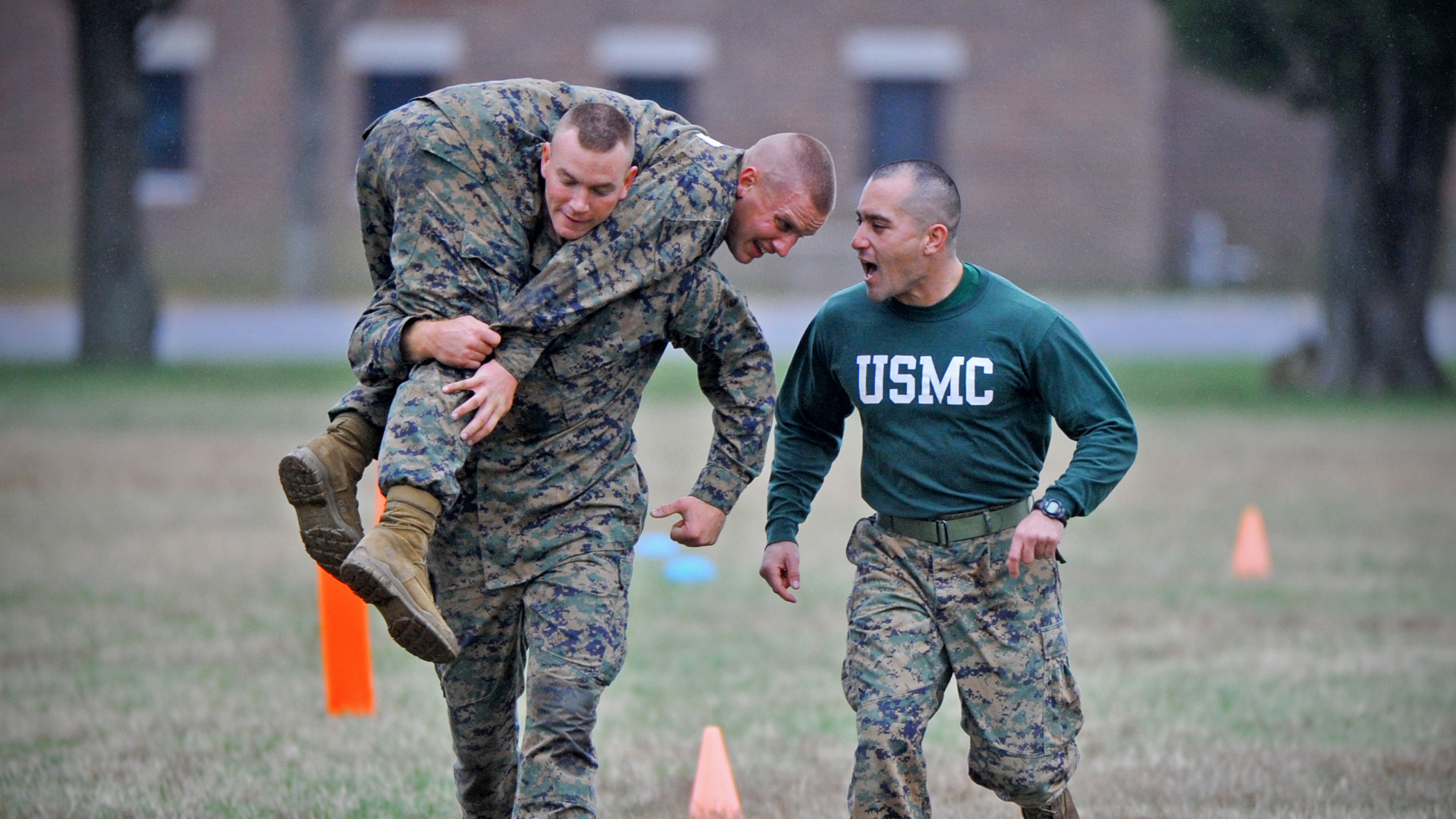Why US marines are no longer required to do crunches during fitness tests
The plank will replace crunches in the US marines fitness test. Here's why – and how long you need to hold it for...


Could you pass the minimum standard of fitness for a US marine? According to Military.com, a male recruit between the ages of 26 and 30 would need to be able to do at least five pull-ups, at least 39 push ups, run three miles in under 28 minutes, and do 70 crunches. However, due to a new change in the rules, the crunch section has been changed in favour of a different exercises.
Crunches are great for working on your upper abdominals, generating a lot of muscular activation, and remains extremely effective. You can check out our comprehensive guide on how to do a crunch for more on this. But according to military specialist website Task & Purpose, the US Marine Corps – some of its members rank among the fittest people in the country – are dropping the crunch from its physical fitness test, or PFT, in favour of the plank.
Instead of tasking its members to do at least 70 crunches (up to a maximum of 115), the USMC has been offering the option of planking to demonstrate core strength, with a hold time of one minute, three seconds required to pass. From 1 January 2023, the plank will become mandatory, increasing to a minimum hold time of one minute, 10 seconds.
Capt. Sam Stephenson, a USMC spokesperson, reportedly said: “For decades, the Marine Corps has used crunches to both improve and assess abdominal endurance. However, research has shown that crunches with the feet restrained require significant hip flexor activation. This has been linked to an increased risk of injury, including lower back pain due to increased lumbar lordosis.”

Quite a few papers have been published on this in recent years. One study from November 2016, conducted by researchers from City University of New York, said "despite the benefits [of crunches], participation may increase one's risk for low back pain" due to the pressing of your spine against the floor as you work the upper part of your torso and hip flexors. This can leave the spine curved while pushing against the floor, leading to injury.
Planks, meanwhile, are usually performed while balancing on your forearms and the balls of your feet. It puts no pressure on your lower back, and so it's much safer for people to perform. It's also a difficult isometric exercise, activating the entire "trunk" of your body including the rectus abdominus, obliques and lower back.
If you can already hold the plank position for over one minute, congratulations – you're one step closer to aceing the basic US Marine Corps fitness test. However, there's no need to hold the plank for longer than two minutes at a time, as Harvard University found you don't get any benefit from holding the plank for any longer. If you're not quite there yet, our guide on how to do a plank can help. If you want to work your core even further, try one of our best ab rollers.
Start your week with achievable workout ideas, health tips and wellbeing advice in your inbox.
Matt Evans is an experienced health and fitness journalist and is currently Fitness and Wellbeing Editor at TechRadar, covering all things exercise and nutrition on Fit&Well's tech-focused sister site. Matt originally discovered exercise through martial arts: he holds a black belt in Karate and remains a keen runner, gym-goer, and infrequent yogi. His top fitness tip? Stretch.
